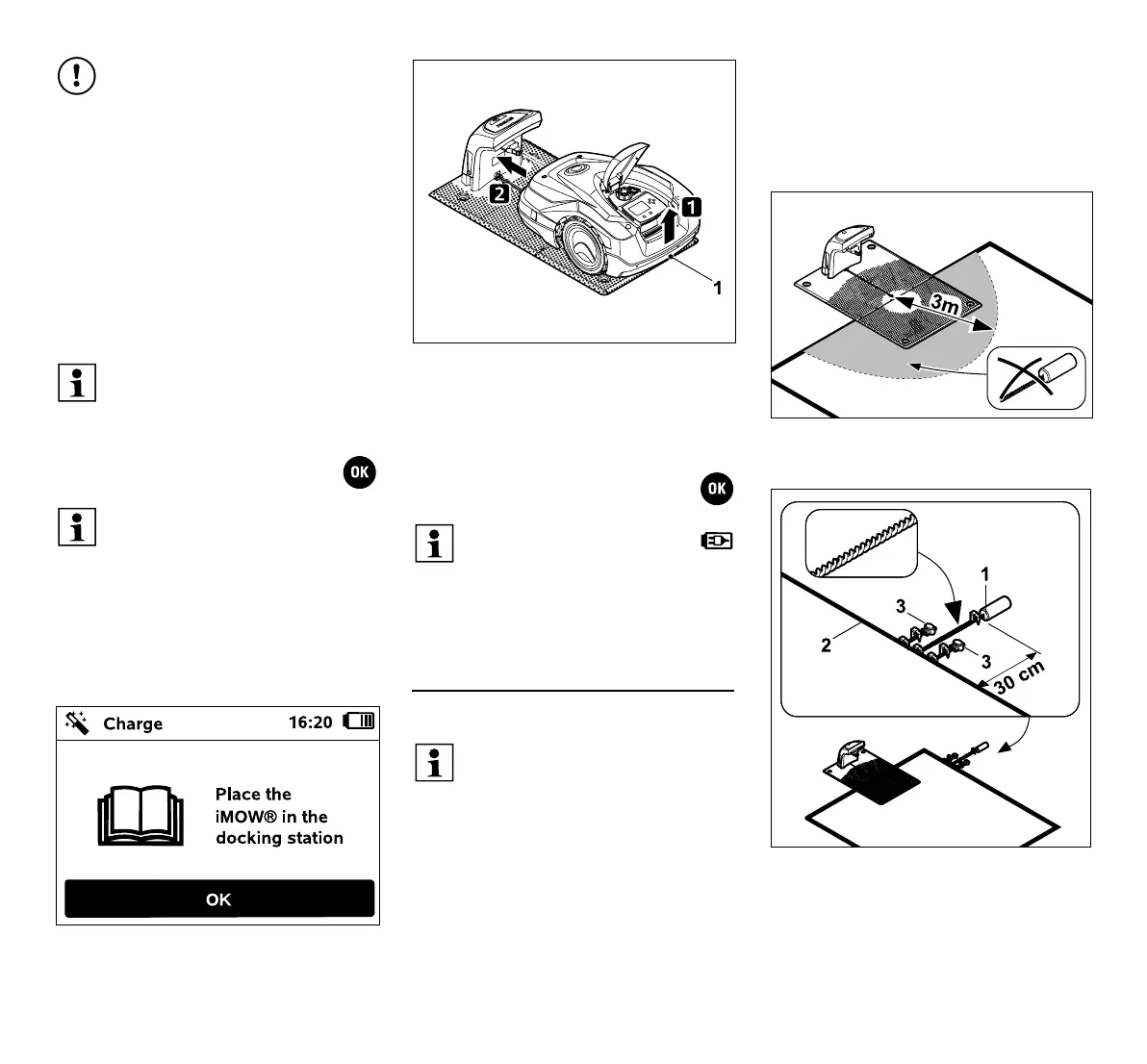0478 131 9965 A - EN
122
● Route all power cables outside the
mowing area, in particular out of reach
of the mowing blade, and fasten them to
the ground or accommodate in a cable
duct.
● Unreel power cables in the vicinity of
the docking station in order to avoid
interference with the wire signal.
● Connect the mains plug.
● After completing this installation
work, press the OK button.
Lift the robotic mower slightly by the
carrying handle (1) to relieve the weight on
the drive wheels. Push the machine,
resting on its front wheels, into the docking
station.
Then press the OK button on the
display.
9.9 Routing the perimeter wire
For smaller mowing areas with a wire
length of less than 80 m, the AKM 100
supplied must be installed together with
the perimeter wire. If the wire lengths are
too short, the docking station flashes SOS
and no wire signal is output.
Install the AKM 100 with a minimum
clearance to the docking station of 3 m.
Fasten the AKM 100 (1) 30 cm outside the
mowing area using a fixing pin. Twist the
wire ends as far as the mowing area and
fasten using a fixing pin.
Correct operation of the power
supply unit is only ensured at an
ambient temperature between
0° C and 40° C.
The red LED on the docking station
flashes rapidly as long as no
perimeter wire is connected.
(Ö 13.1)
With external docking station:
Define at least one starting point
outside the corridor to the docking
station after initial installation is
complete. Define the starting
frequency so that 0 of 10 mowing
operations (0/10) are started at the
docking station (starting point 0).
(Ö 11.14)
If the battery is discharged, a
plug symbol appears instead
of the battery symbol at the
top right corner of the display after
docking and the battery is charged
while the perimeter wire is being
routed. (Ö 15.7)
Please read and observe the entire
"Perimeter wire" section before
performing wire routing. (Ö 12.)
In particular, plan the routing,
observe the wire clearances and
install no-go areas, reserve wire,
linking sections, secondary
areas and corridors during wire
routing.
